The Interface
The iPod's interface is the best we have seen to date on an MP3 player of any type. Turning on the unit is instantaneous. The only time that the unit requires time to power on is immediately after the unit connected or disconnected from a computer. This power on process occurs automatically and takes approximately ten seconds, during which the iPod displays the Apple apple icon. The unit's hard drive spins up at this time as well.
Hitting any button on the iPod instantly brings the iPod's screen to life. The root menu is displayed upon power on.
From here the user has a variety of options from which to select. The first option, entitled "Playlists" allows the user to choose to play a group of songs stored in a playlist that is made on a computer.
The second menu option, entitled "Artists" brings up a list of every artist which has songs on the iPod. As with all other song information on the iPod, the artist information comes from the MP3's ID3 tags, which it pulls and stores in a database for easy access. No hard drive access occurs during this process, suggesting that the database information is already present in memory.
The next menu item, "Songs", brings up a list of every song that is on the iPod unit. Song titles, grabbed once again by ID3 tags, are organized alphabetically. Scrolling through numerous songs is painless thanks to the scroll wheel's acceleration.
The "Settings" menu brings up a list of user definable settings.
The final item, the "About" screen, shows information about the iPod unit, including how much space is used, how many songs are on the unit, and other useful information. The rest of the about screen is devoted to copyright information on the unit and the software.
An Easter egg is actually included in the iPod software and is accessible in the "About" screen. Holding down the middle select button for five seconds brings up Apple's version of the classic Breakout game. Paddle control is accomplished using the scroll wheel.
When a song or album is selected, the "Now Playing" screen comes up. This screen shows information including how many songs are currently queued, the song name, the artist name, the album name, and how much time is elapsed or remaining (depending on your preferences).
Selecting a song is as easy as hitting the middle selection button. Once a song is selected to be played, the unit spins up the hard drive for approximately four or five seconds. It is in this time period that the iPod reads initial song information from the hard drive into its 32MB of onboard memory. The iPod will read as many full songs as it can into memory in order of what is queued. Skipping past the buffered region, which typically lasts about 7 full length songs, causes the unit to pause for about three seconds while the hard drive spins back up to read and buffer the proper region. It takes approximately 10 seconds of hard drive access to buffer the full amount of onboard memory. This process is transparent to the user and the unit only pauses for a few seconds when the hard drive is initially spun up. During this time the unit makes a very faint noise and sits at the current screen.
If any of the ID3 tag fields are too long to fit properly on the iPod screen, the display will scroll to reveal the full information.
It is interesting to note that the iPod's OS was not actually developed by Apple. For this task, Apple turned to a company named Pixo. Pixo business is making OSes for a variety of "wireless applications" such as cell phones and PDA's. It seems that Pixo was a logical company for Apple to turn to while designing the iPod.


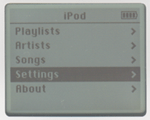
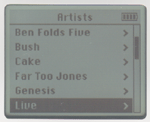
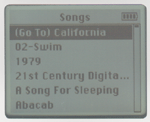
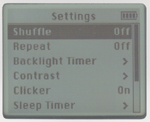
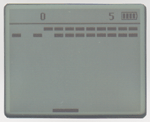
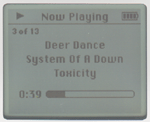








2 Comments
View All Comments
tipoo - Wednesday, January 12, 2011 - link
First. On an article from 2002. Muahaha.Saeed A. - Wednesday, October 17, 2012 - link
خسته نشی !!!